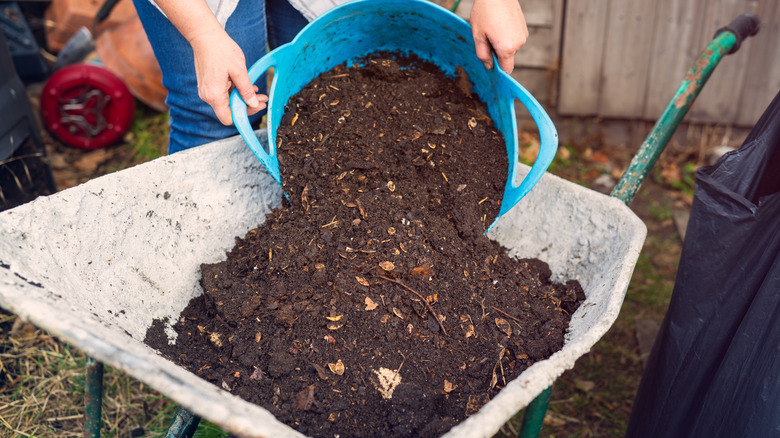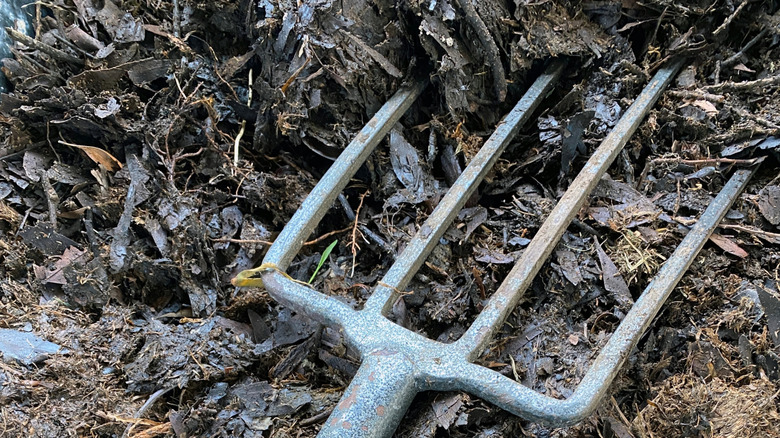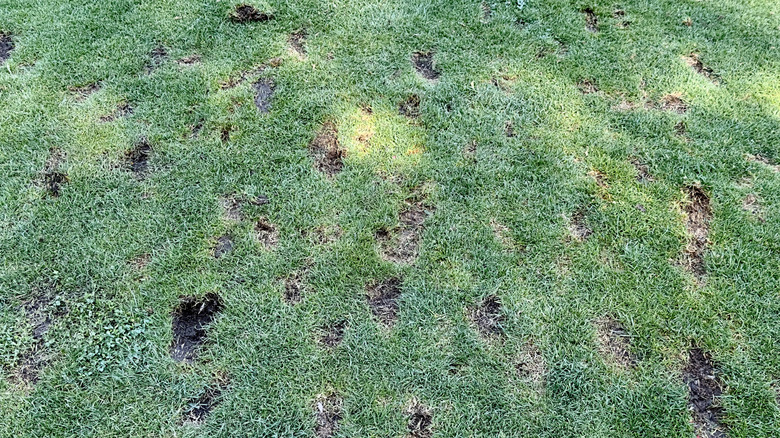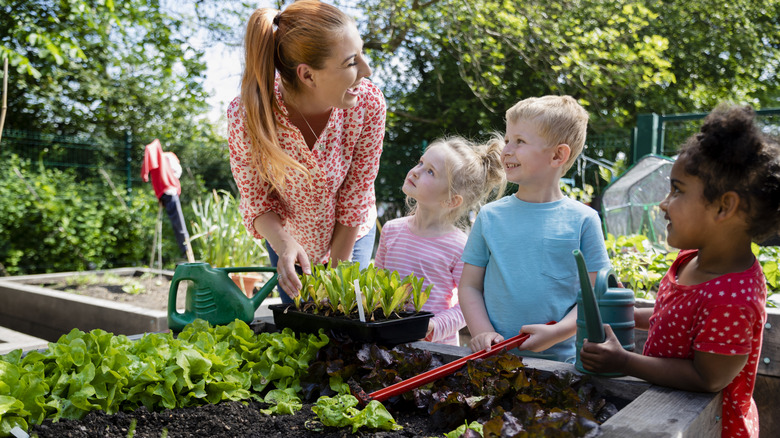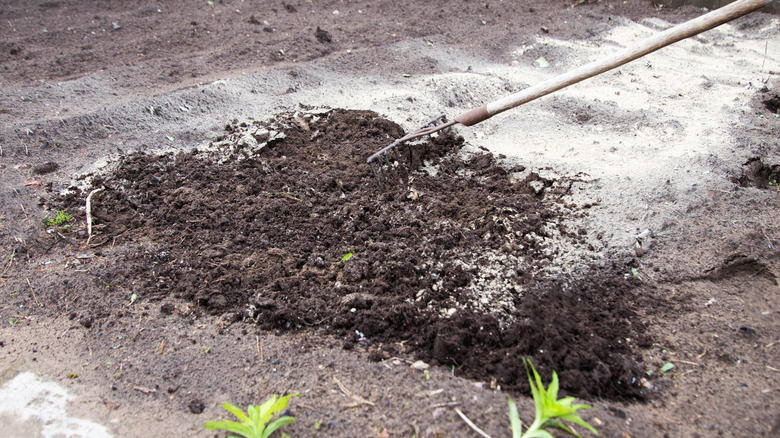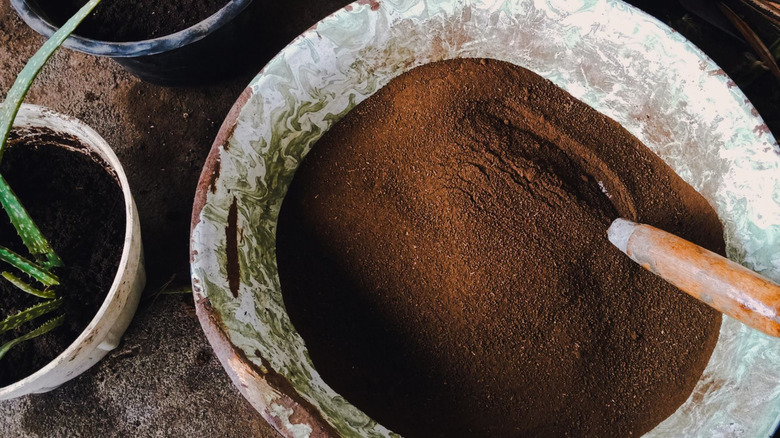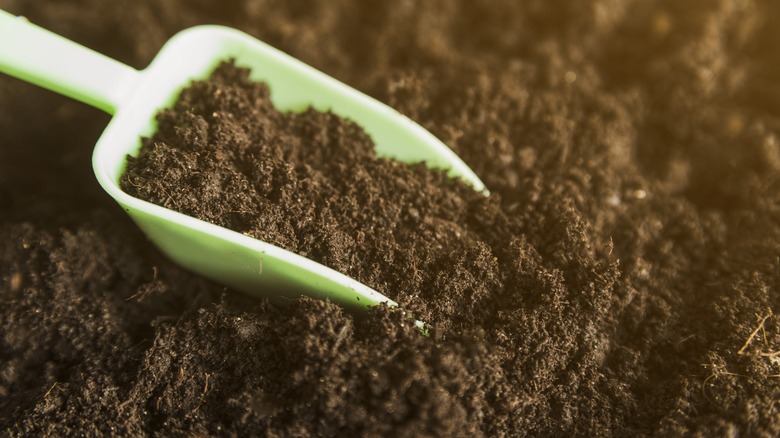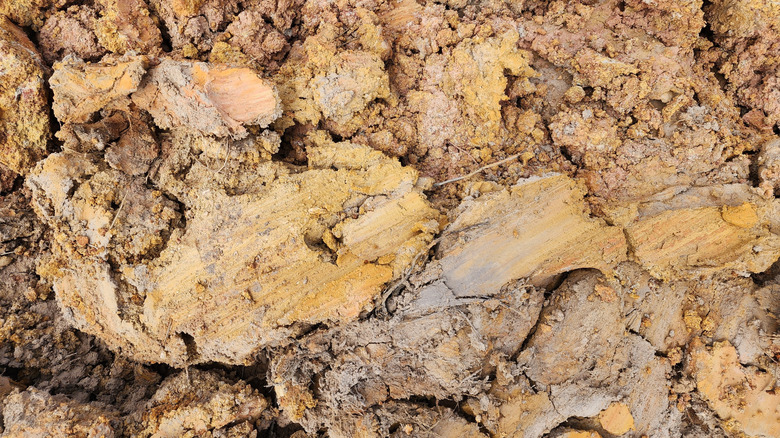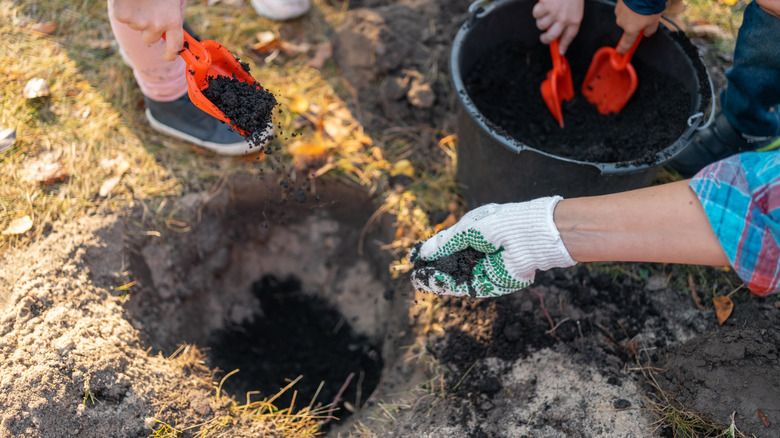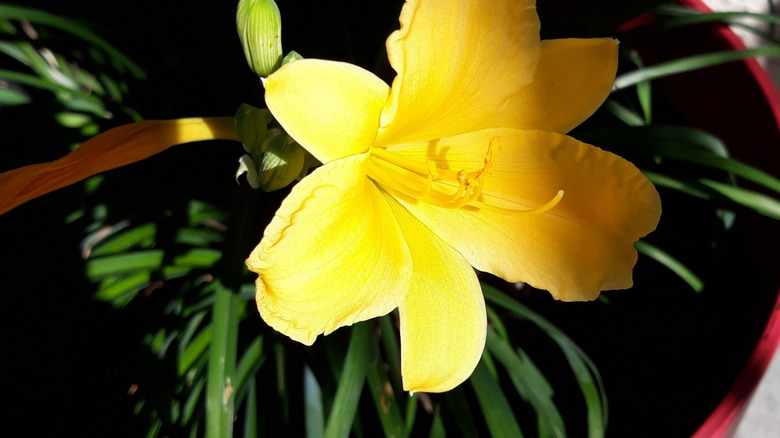9 Brilliant Ways To Reuse Old Potting Soil Instead Of Tossing It Out
At a time when most of us are looking for ways to cut spending, it's helpful to learn that you can save on potting soil by knowing when to refresh versus when to replace. Old potting soil is safe to reuse as long as the plants they were used for were not diseased. Your used potting soil has undergone some depletion but still has much to offer by adding it to compost, filling holes in your yard, and using it in a custom soil mix.
Recycling your potting soil provides a number of advantages beyond saving money. Because potting soil is made primarily from organic materials, it can contribute in numerous ways to your garden's vitality. Your old potting mix contains microorganisms that help make nutrients available to plants and contribute to plant health. Similar to compost, old potting soil builds soil structure as it decomposes, especially if it's amended with additional organic materials. Reusing your old potting mix is a sustainable practice that also keeps it from going to waste in a landfill.
Add old potting soil to compost
Your compost bin or pile will benefit from your used potting soil. If you are hot-composting using green (nitrogen-rich) materials and brown (carbon-rich) materials, old potting soil is a serviceable brown material. Given that gardeners typically place alternating layers of green and brown materials in their hot composting bins or piles, you can use old potting soil for some of your brown layers.
Fix lawn issues like holes and divots with old potting soil
Old potting soil is extremely useful for repairing holes, divots, and bare patches in your lawn. If needed, clean out the problem area by removing debris, using a shovel to scoop it out or the water pressure of a hose to squirt it out. Then, simply shovel or trowel some of the potting soil onto the imperfection and tamp down with your feet.
Donate old potting soil
Many local organizations would likely appreciate your donation of old potting soil. Schools, camps, and organizations focusing on children often offer planting programs might benefit from your donation, as would your local food banks or organizations helping those at risk of food insecurity. Organizations holding plant or seed swaps may welcome other garden supplies like your used soil. It's also a good idea to contact your local Extension office and see if Master Gardeners could use the soil for their educational efforts or ask neighbors if they could use your extra before you toss it.
Use old potting soil to topdress your lawn or garden beds
Did you know that topdressing your lawn is the easiest way to get better looking grass — and old potting soil can help? This practice consists of spreading a light layer of material (often sand, but can be soil like your potting mix) on top of a turf lawn or garden bed. Topdressing will benefit the host location even more if you amend your old potting soil with additional organic material, but even if you don't, the potting-soil topdressing may help the soil structure in your lawn or garden beds.
Increase your overall volume of potting soil by adding old to new
Perhaps the simplest solution for old potting soil is to simply make more potting soil by adding old to new. To keep from contaminating the new soil and diluting its nutrients with old soil, you'll likely want to both sterilize and amend the old potting soil before mixing it with the new. A 50-50 mix of old and new soil is recommended. Not only will you double your supply of potting soil, but you may find the new mix offers drainage, structural, and anti-compaction benefits.
Make a custom DIY soil mix with your used potting soil
Used potting soil offers a wonderful opportunity for creative gardeners with a bit of mad-scientist spirit to create their own DIY potting soil mixes. You can even target specific plant needs with your DIY mix. For succulents, for example, mix old potting soil with sand for good drainage. Create a nutrient-rich mixture by adding compost or other organic material to your old potting soil. Consider adding slow-release fertilizer and a wide array of soil amendments, such as bone meal, peat, or wood ash.
Amend clay soil with old potting mix
The best amendment for improving clay soil is organic material, which your used potting soil certainly offers. This is particularly helpful when you don't have richer organic materials, such as compost, on hand. You also have the option of enriching the old potting soil with other organic materials that will assist in building the clay soil's structure, as well as improving drainage and its ability to retain water.
Fill holes in the landscape with old potting soil
If landscaping updates on your property has resulted in bare spots and holes where landscape elements may have been removed, you can save some money by using your old potting soil as fill dirt. Since you're using it for filling in a void rather than for growing plants, you needn't worry about amending the potting soil. The soil surrounding the hole you've filled will benefit from the potting soil's microorganisms and ability to improve soil structure as it decomposes.
Use old potting soil for plants that thrive in poor soil
Some plants flourish in problematic soil — dry, sandy, clay, compacted, or low in nutrients. If you don't have the time to amend old potting soil, using it for plants that thrive in inferior soil is an effective way to recycle. For example, poor soil quality is no problem when growing many beautiful plants. Popular flowers that grow well in poor soil include yarrow (Achillea spp.), coneflower (Echinacea purpurea), and daylily (Hemerocallis spp.).
